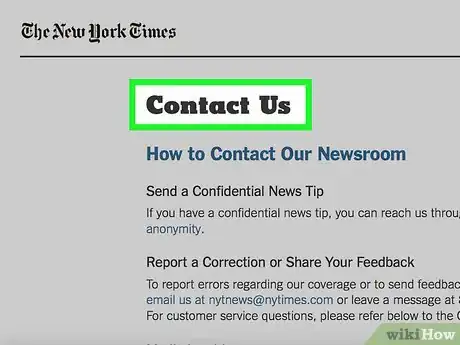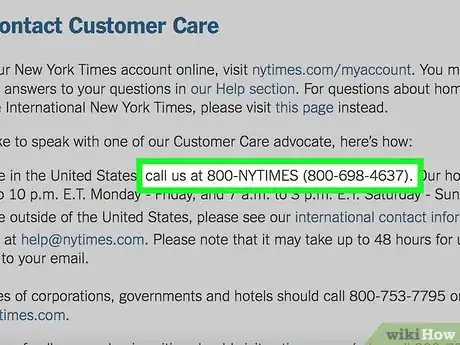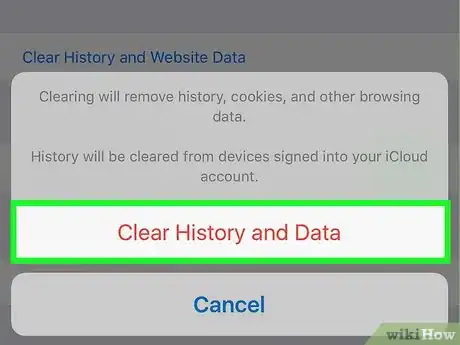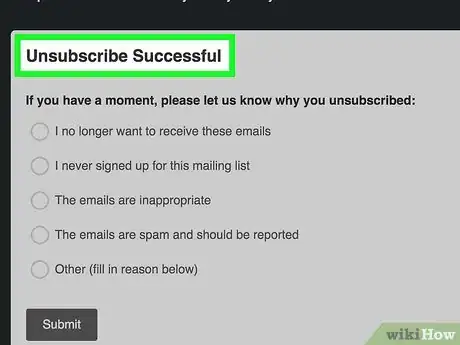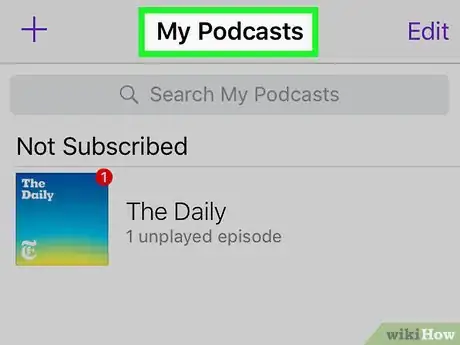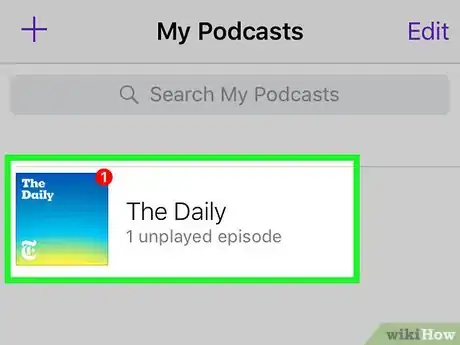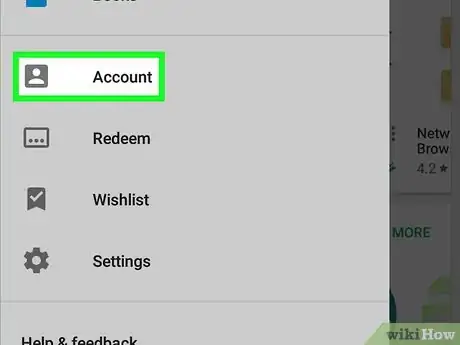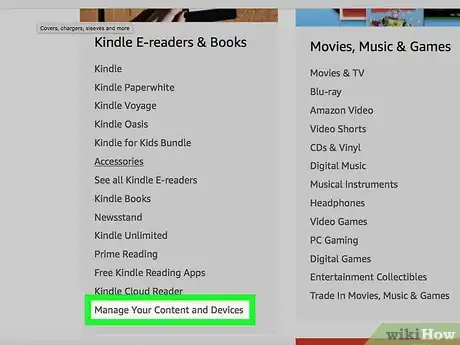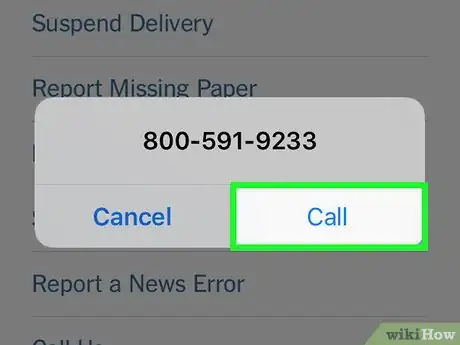This article was co-authored by wikiHow Staff. Our trained team of editors and researchers validate articles for accuracy and comprehensiveness. wikiHow's Content Management Team carefully monitors the work from our editorial staff to ensure that each article is backed by trusted research and meets our high quality standards.
There are 12 references cited in this article, which can be found at the bottom of the page.
This article has been viewed 76,818 times.
Learn more...
While modern technology makes it easier than ever to keep news and entertainment at your fingertips, opting out of those benefits is another story. Subscription-based services like the New York Times intentionally make it difficult for users to ditch their accounts in order to keep them in the system, but there is a way around their maze-like controls. If you’ve got a physical subscription, you’ll have to contact customer service directly and request to be removed from their databases. Mobile users can simply allow their subscriptions to run out and choose not to renew them.
Steps
Contacting the New York Times' Customer Service
-
1Visit the “Contact Us” page on the New York Times' website. Don’t waste time hunting through your user settings for an option to delete your account online, as it’s not possible to do this yourself. Instead, you’ll have to get in touch with someone directly. Once you’ve got the company’s contact page pulled up, you’ll have a few different choices for how to proceed.
- Websites like the New York Times deliberately make it hard for users to delete their accounts so they can hang on to their personal info. This info is stored in a database and may be used for internal marketing purposes or sold to advertisers.[1]
-
2Send an email to the company. Drop a line to the address help@nytimes.com and request that your account be deleted. Make it clear that you want it erased entirely, not just deactivated or put on hold. Otherwise, the company may leave the account in existence, which means all the details it contains will remain in their archives.[2]
- Be explicit about what it is you want. Use the word “delete” and not something more ambiguous, like “remove” or “deactivate.”
- It may take up to 48 hours for you to receive a response to your email.
-
3Set up a chat with a representative for an immediate response. Click the “Contact Us” link on the main page of the New York Times website and find the option to “Begin Chat." This will appear as a big blue button on the bottom half of the page. From there, you’ll submit a short form asking for your contact information and the nature of your question or request.[3]
- You shouldn’t be asked to provide a reason for the cancellation. If the on-call representative attempts to talk you out of it, however, or begins going over alternative options, explain that you want the account shut down for good.
-
4Call Customer Service to talk directly. If you’d prefer a more personal mode of communication, try dialing 800-NYTIMES (800-698-4637). You’ll be able to speak to a representative one-on-one, which can help clear up any potential confusion about your request. This may be quicker than dealing with a live chat or waiting on a reply via email.[4]
- The customer service department accepts calls from 7am to 10pm E.T. Monday-Friday, and from 7am-3pm E.T. on the weekends.
- Those who live outside of the United States should take a look at the New York Times’ International Contact Information list to find out when and what number to call.[5]
-
5Clear your third-party login information. Just because your account has been deleted doesn’t mean every last trace of your user history will be gone. To wipe out this info once and for all, log in to the website or app that you used to sign up for your New York Times account originally and revoke its access privileges.[6]
- Once you block third-party logins, your past account activity will vanish, along with other trackable details like your passwords and search history.
- If you’re serious about erasing the memory of your subscription altogether, clear your web browser’s cookies to destroy any remaining stored info.
-
6Confirm that trial promotions have ended. If you've recently taken advantage of one of the publication's introductory offers, there's a chance that you may be added to a list of regular subscribers and charged without notification. Make sure you get in touch with customer service as soon as the promotion ends and inform them that you've decided not to continue your subscription service.
- This is just another trick the New York Times uses to keep its readers hooked.
- One-time purchases, such as gift subscriptions, are not eligible for cancellation or refunding.
Changing Your Digital Subscription Settings
-
1Log in to your iTunes account. If you’re using a personal computer, double click the iTunes icon on your desktop or select it from the complete list of programs in the “Start” tab. If you’re using a mobile device, you can open the App Store directly through the device itself. Once iTunes has loaded, put in the username and password you used to sign up for your account.[7]
- You may be prompted to provide your email address rather than a user name, depending on the platform you’re using and the version of the software you have downloaded.
- Check the box to remember your login info to make logging in faster and easier in the future.
-
2Access your digital subscriptions. From the Account Information screen, find the tab labelled “Settings” and click or highlight it. Then, locate the “Subscriptions” option and open the “Manage” link beside it. From here, you’ll be able to view and make changes to every subscription you receive on your mobile device.[8]
- If you were once a subscriber and are now uncertain whether you’re still paying for it, you are—the New York Times has set up their digital subscriptions to renew automatically.[9]
-
3Find your New York Times subscription. Scroll down the your list of subscriptions until you come to "New York Times" (subscriptions should be arranged alphabetically). You'll see a button next to it labelled “Auto-Renewal.”[10]
- You’ll have to tap the title of the publication an extra time if you’re attempting to cancel from your mobile device.
- This will also be a good opportunity to terminate any other unwanted subscriptions.
-
4Switch off the “Auto-Renewal” setting. This button gives you two options: “On” and “Off”—if your subscription is up to date, it should be set to “On” by default. Click or tap the button once to toggle it to the “Off” setting. After turning off Auto-Renewal, hit the “Done” button to return to your Account Information screen.[11]
- Technically speaking, you can’t cancel an New York Times subscription yourself. By choosing not to renew, what you’re actually doing is letting your subscription lapse.
- Your cancellation will take effect following the end of the current billing cycle. That means that if you opt out at the beginning of January, you’ll still be charged for the entire month. You will, however, keep your subscription privileges until February.
-
5Go through the Google Play Store for a non-Apple device. If you're using an Android tablet or smartphone as opposed to an iPhone, you can cancel your subscription via Google's app marketplace. Log in to your account and open your Subscriptions list. Highlight your New York Times subscription and tap the "Cancel" button beside it.[12]
- As with iTunes, choosing to cancel a New York Times subscription through the Google Play Store won't actually terminate your account then and there. It will, however, stop auto-renewing, which means you'll be free starting the next monthly payment cycle.
- If you delete the New York Times app without taking the proper steps to end your subscription, you'll still be responsible for whatever charges you rack up.[13]
-
6Manage your Kindle subscriptions through Amazon. On the main site, go to "Manage Your Kindle Subscriptions." You'll be shown a list displaying all of the subscriptions you've signed up for in the past, both active and inactive. Scroll down until you see your New York Times subscription and click the "Cancel My Subscription" option on the far right.[14]
- A New York Times subscription for the Kindle is separate from a standard digital subscription. Keep this in mind if your goal is to put the freeze on all of your secondary subscriptions.[15]
- Amazon's Kindle subscription manager also shows you your billing information and history, which may come in handy if you need to clear up a dispute with customer service sometime down the road.
-
7Contact New York Times Customer Service for help. Should you happen to experience any issues, send an email to help@nytimes.com. You can also call 800-NYTIMES (800-698-4637) to get in touch with a representative right away. Describe your problem and ask that they discontinue your subscription without further delay.
- If you discover that you subscription has continued after you’ve tried to end it, ask if you might be eligible for a refund for the deducted amount.
Warnings
- Customer Service may try to talk you into keeping your subscription by offering special benefits or discounts. If you want it gone, just say so.⧼thumbs_response⧽
- Don’t attempt to let your digital subscription lapse by changing the preferred payment method associated with your account. You’ll still be responsible for paying what you owe for missed billing cycles, even if you cancel your credit card or get a new number.⧼thumbs_response⧽
References
- ↑ http://www.slate.com/blogs/future_tense/2013/08/26/just_delete_me_how_to_delete_your_account_on_amazon_netflix_skype_et_al.html
- ↑ https://ico.org.uk/for-the-public/your-right-to-get-your-data-deleted/
- ↑ http://www.nytimes.com/help/index.html?redir=myacc
- ↑ http://www.nytimes.com/help/index.html?redir=myacc
- ↑ https://www.nytimes.com/content/help/contact/international-contact/international-contact.html
- ↑ https://www.accountkiller.com/en/delete-new-york-times-account
- ↑ https://support.apple.com/en-nz/HT202039
- ↑ https://support.apple.com/en-nz/HT202039
- ↑ https://www.classaction.org/news/new-york-times-sued-over-website-auto-renewals-in-north-carolina
- ↑ https://gadgetwise.blogs.nytimes.com/2011/10/14/qa-canceling-a-digital-subscription/
- ↑ https://gadgetwise.blogs.nytimes.com/2011/10/14/qa-canceling-a-digital-subscription/
- ↑ https://support.google.com/googleplay/answer/7018481?co=GENIE.Platform%3DAndroid&hl=en
- ↑ https://support.google.com/googleplay/answer/7018481?co=GENIE.Platform%3DiOS&hl=en&oco=0
- ↑ https://www.askdavetaylor.com/how_to_cancel_amazon_kindle_magazine_newspaper_subscription/
- ↑ https://www.nytimes.com/content/help/account/purchases/kindle/kindle-subscribers.html#kindle-subscribers-cancel
